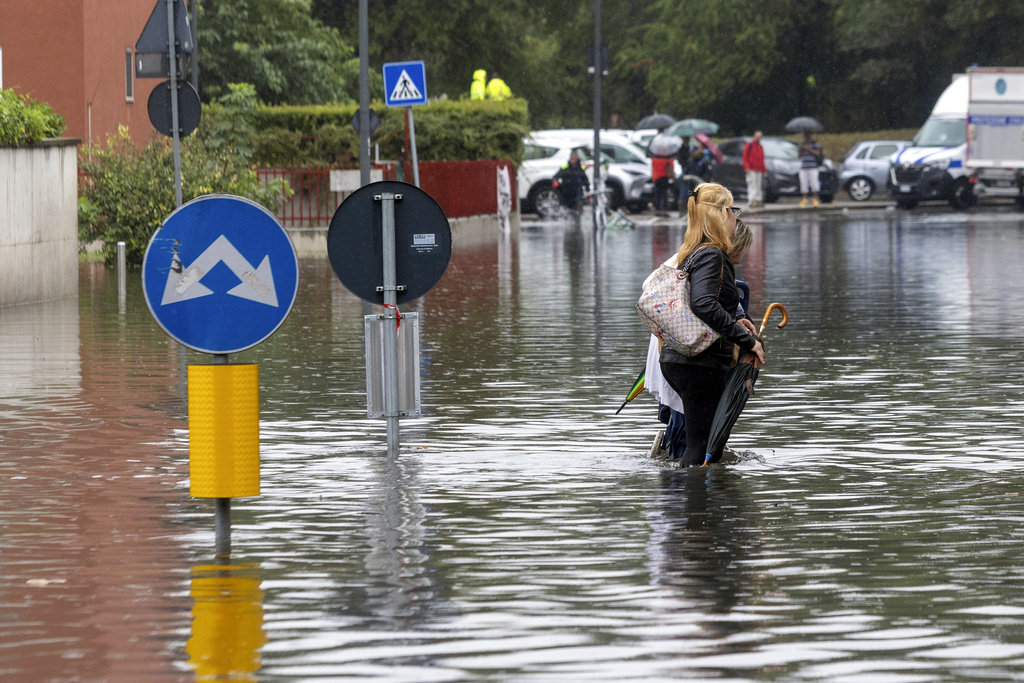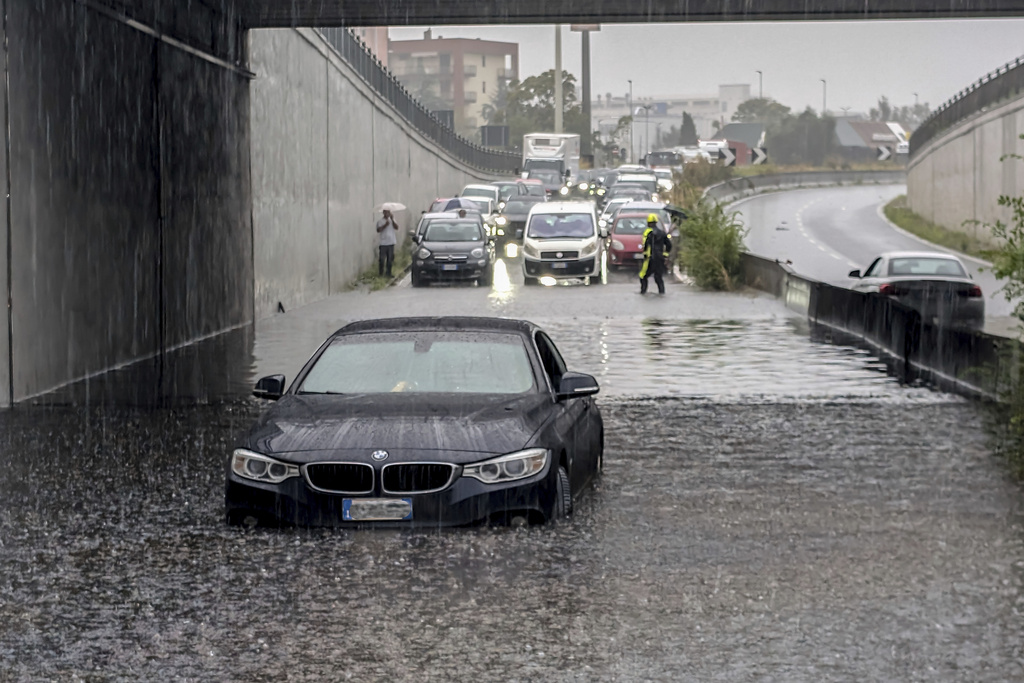Rainstorms Flood Northern Italy, Triggering Chaos and Rescue \ Newslooks \ Washington DC \ Mary Sidiqi \ Evening Edition \ Severe rainstorms swept through northern Italy, causing widespread flooding in regions like Milan, Piedmont, Lombardy, and Veneto. A 58-year-old man went missing after being swept away on a tractor in Piedmont, while rivers overflowed, collapsing bridges and isolating villages. The storms highlight the increasing frequency of extreme weather events linked to climate change, even as southern Italy grapples with severe drought.

Quick Read
- Severe rainstorms hit northern Italy, causing widespread flooding in Milan, Piedmont, Lombardy, and Veneto.
- A 58-year-old man is missing after being swept away on a tractor in Piedmont; rescue efforts are ongoing.
- Rivers overflowed, collapsing bridges, blocking roads, and isolating villages, prompting emergency responses.
- Flooding disrupted Milan’s infrastructure, with subway services suspended and Radio Popolare going off-air.
- Scientists link the increasing frequency of extreme weather events, like storms and droughts, to climate change.
- Southern Italy is currently experiencing severe drought, heavily impacting agriculture and tourism, especially in Sicily and Sardinia.
Italy Rainstorms, Full Story
A series of violent rainstorms battered northern Italy on Thursday, leading to severe flooding in several regions, including Milan, the country’s financial hub, and raising concerns for the life of a man swept away while driving a tractor in the Piedmont region. Heavy rainfall and overflowing rivers have wreaked havoc across the area, bringing parts of Italy to a standstill and causing significant damage and disruption.
The situation in Piedmont is particularly dire, where a 58-year-old man went missing after his tractor overturned in the swollen Orco creek near Turin. Footage broadcast by state television RAI showed the wheel of the tractor still visible, protruding from the muddy waters of the creek, where the vehicle was swept away. Local rescue teams are searching desperately for the man, hoping to find him alive, but the conditions have made the search increasingly challenging.
In addition to the incident near Turin, another river in Piedmont’s Val di Susa overflowed its banks, causing the collapse of two bridges, blocking a provincial road, and isolating approximately 50 people in two villages. Emergency responders are on the ground, attempting to restore access and ensure the safety of those stranded. The flooding has also caused extensive damage to infrastructure and property throughout the region.
The neighboring regions of Lombardy and Veneto have not been spared from the impact of the storms. In Milan, the overflow of the Seveso and Lambro rivers has led to widespread flooding, with streets and basements inundated with water. Firefighters have been overwhelmed with calls for assistance, responding to numerous reports of people trapped in their cars in flooded underpasses, as well as to requests to pump water from flooded homes and buildings. The scale of the flooding has prompted the temporary suspension of some subway services in Milan, further complicating the situation for residents and commuters.
The impact of the storms was also felt by Milan’s Radio Popolare station, which went off the air for the first time in its history since being established in 1976. The station’s broadcast center was inundated with water, forcing it to halt operations temporarily.
Scientists have long warned that the climate crisis is contributing to an increase in the frequency and severity of extreme weather events worldwide, including in Europe. They point out that rising global temperatures are making storms more intense, as warmer air holds more moisture, leading to heavier rainfall and more frequent flooding. The current situation in northern Italy is just one of many recent examples of how climate change is impacting weather patterns.
While northern Italy grapples with flooding, southern Italy is facing a very different climate challenge. The region has been suffering from a severe drought, which has created significant problems for agriculture and tourism, especially on the islands of Sicily and Sardinia. The prolonged lack of rain has dried up reservoirs, withering crops, and threatened water supplies, putting additional pressure on local communities and economies already strained by the effects of the climate crisis.
The events unfolding in Italy are a stark reminder of the growing dangers posed by climate change and the urgent need for action to mitigate its effects. As the country deals with both devastating floods in the north and crippling drought in the south, the need for adaptive strategies to cope with the new realities of extreme weather is more evident than ever.







